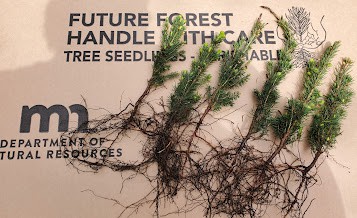I planted over 400 Spruce seedlings this spring. They’re only about six inches tall and will take three or four more decades to reach maturity. Other than passively purifying the air and providing housing for local wildlife, they are not for my enjoyment. They are for my children, grandchildren, and eventual great grandchildren.

You know the saying: “The best time to plant a tree is twenty years ago. The second best time is today.”
The metaphor is useful. In a perfect world, we’re able to anticipate transitions, grasp the reality of continuous change, and prepare for whatever the next stage brings, whether expected or unexpected. With a little luck, foresight, and planning, transitions can be seamless. Yet life doesn’t always unfold according to plan. It’s easy to neglect to plant the seeds that feed tomorrow when we’re always caught up in either yesterday’s trauma or today’s emergency.
In forests, the ‘mother tree’ owns that responsibility. She connects her roots with a family of kin and strangers to share both nutrition and protection. In the last third of her lifespan, she gifts her nutrients and knowledge to her kids, one of whom becomes the next mother tree for a few hundred years.
As humans, we don’t have a few hundred years at our disposal. The human lifespan lasts about 4,000 weeks and only a fleeting fraction of that time provides us with opportunities to nurture, mentor, and sponsor the next generation. If you are reading this article, you are probably somewhere within this brief window of action-taking.
So, if you, for whatever reasons, didn’t plant your tree twenty years ago, what will you do today? Have you located a protégé yet? Have you begun to invest your time, resources, and reputation in that person? Have you taken the steps that ensure your work will thrive beyond your 4000 weeks (or whatever portion of that time blesses you with the capacity to choose)? Perhaps now is exactly the right moment to begin feeding the next generation.

